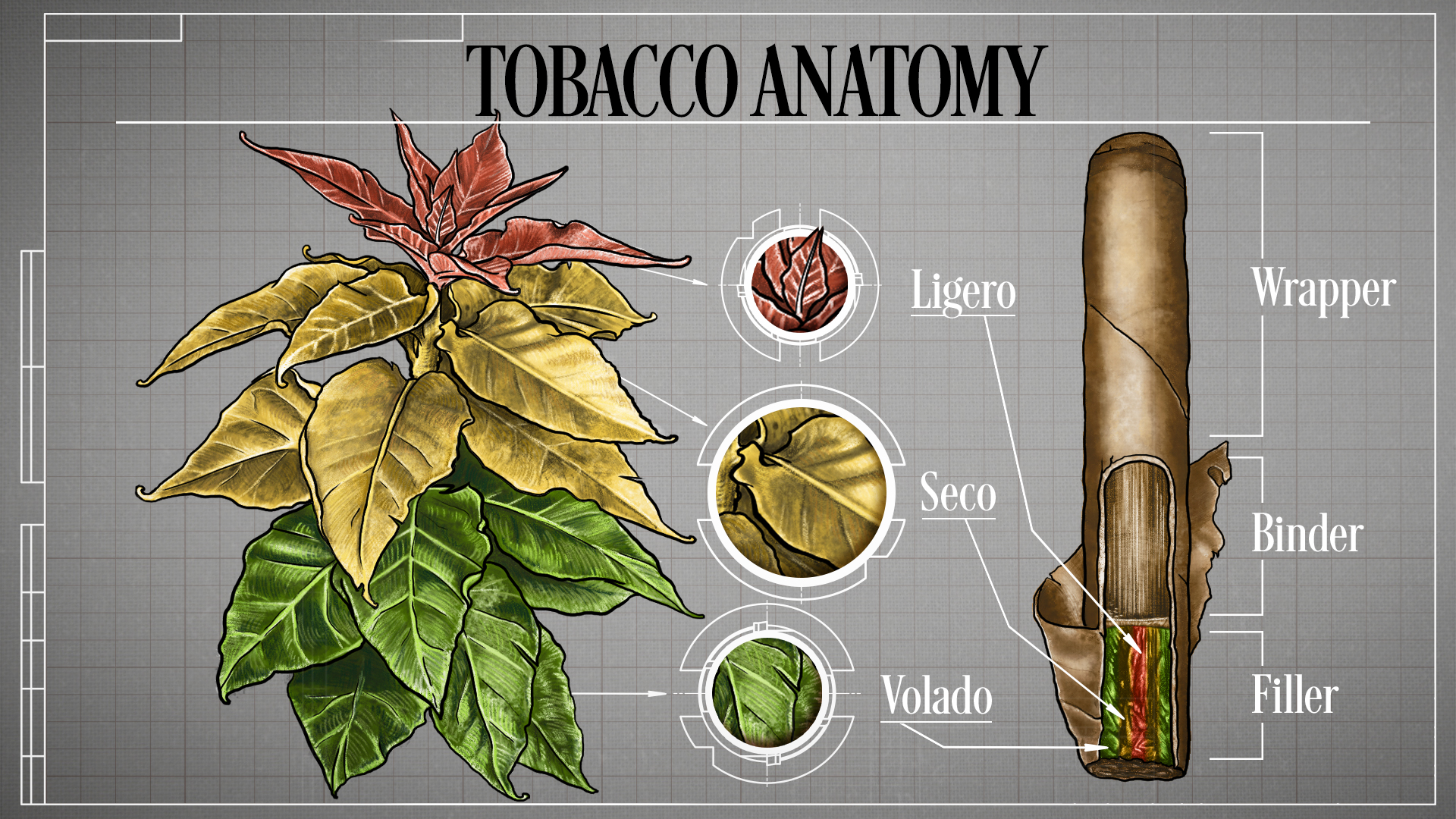Tobacco has been grown all over the world for centuries. For thousands of years, tobacco has been utilized here in America for a multitude of things, but the most popular use of the tobacco plant has been created for the cigars we enjoy smoking day in and day out.
It was noted that Christopher Columbus spotted Cuban natives smoking cigars when he discovered America. Other notable historical moments were when the French ambassador, Jean Nicot, tobacco to England from France in the late 1500s.
The history of tobacco leaves and other parts of the plants spans over 500 years, yet how familiar are we with the history and anatomy of the tobacco plant?

The origins of the tobacco plant
Tobacco derives from a plant in the nightshade family, Nicotiana, which is indigenous to North and South America. Around the first century BC, tobacco spanned as high up as the Mississippi valley among native tribes across our land.
Today, tobacco is a cash crop for farmers and cigar manufacturers across the world. Other than being used for consumption in cigars, chewing tobacco, and cigarettes, the tobacco plant can be utilized as a great pest poison, relieve allergies such as rashes and itching, and can clean nasal passages.
So, with all the negativity and backlash tobacco gets across the nation, there are certain cases where the tobacco leaf can come in handy.
Harvesting tobacco lasts two to four months after planting it in rich soil. After harvesting the tobacco, you can cure the tobacco in three different ways; fire-cured, air-cured, and flue-cured.
When curing tobacco, there are four essential steps to this process. Wilting the tobacco, yellowing the tobacco, coloring the tobacco, and finally, drying the tobacco.
Air curing is one of the more popular ways of curing tobacco, in which you mechanically ventilate the tobacco inside of a barn. Charcoal or petroleum are ways to provide such conditions in curing tobacco.
The Anatomy of the Tobacco Plant
Growing from four to six feet tall, each leaf on the tobacco plant reaches 3.5-5.5 cm. The tobacco plant is made up of three primary sections; the Ligero, Seco, and Viso.
Tobacco plants are usually found where there are rich soils, sunny weather mixed with rain, and in countries where it’s mainly 80-90 degrees all year round.
You can find the Ligero, Seco, and Volado throughout a cigar. Some of the best leaves from the plant will be utilized for the wrapper.
The two types of filler tobacco within a smoke are called long filler and short filler. Long filler tobacco is the leaf running from the head to the foot of the cigar, while short filler tobaccos come from shredded pieces of the leaves that get thrown into the blending process.
Ligero
First, let’s start with the top of a tobacco leaf. “Ligero”, or “light” in Spanish, is the tobacco found at the very top of each tobacco plant. Slower to mature than the Seco or Volado, Ligero leaves can be characterized by a rough texture or grain.
Receiving the most sunlight of any tobacco leaf, the Ligero is the strongest variety of the plant. Mainly grown in the Esteli region of Nicaragua, the Ligero part of the plant consists of several levels, which vary from seed to seed.
You have the Medio Tiempo section, consisting of three to four thick, smaller leaves at the very top of the plant. This is the most potent part of the leaf.
Next, you have Corona, which is right below the Medio Tiempo section. This isn’t as strong or thick. The final part of the Ligero called the Centro Gordo is one of the thickest parts of the Ligero’s base.
Seco
Seco is the middle part of the plant, which is coarser and offers milder flavors, unlike the Volado and Ligero. Seco makes up 50% of the tobacco plant.
Within the Seco, you can find three different types of leaf varieties, all of which are well-balanced and oily. First, you have the Centro Fino, which lacks potency but is still rich with flavor.
Then you have Centro Ligero leaves, which comprise the bulk of the Seco section. Finally, the first layer of the Seco is the Uno y Medio. This area features tobacco primarily used for the binder.
The great thing about the Seco section of a tobacco plant is that it gets the best features from both the top part of the plant (Ligero) and the bottom part of the plant (Volado).
Volado
Although this is the last section of the plant we’re discussing, the Volado is the first priming part of the plant. With little to no sun exposure, this part of the plant doesn’t have much flavor within its leaves.
With limited exposure to the sun, the Volado leaves are very light and thin, and this isn’t necessarily a bad thing. The Volado section of the plant offers exceptional burning qualities because it is more combustible. Much like the Seco, the Volado is utilized within the binder part of the cigar.
Final Thoughts
I’m sure we can go into greater detail about how to plant a tobacco plant in certain parts of the world, but breaking down the basics of a tobacco plant to start with is a good jumping-off point. If you ever find yourself in a tobacco field or touring one here in the States or South America, you’ll now know a brief part of a Tobacco plant and its main ingredients.
Other Tips For Beginner Cigar Smokers
- New to cigar smoking? Check out our new sampler for Beginner Cigar Smokers. This sampler has seven cigars, a cutter, and a lighter.
- Some popular cigar sizes to smoke are a Toro-sized cigar, a Churchill-sized cigar, and a Robusto-sized cigar for you to enjoy.
- If your cigar happens to crack, here are some suggestions on how to repair a cracked cigar.
- If you come across some mold in your humidor, here are some tricks and tips to clean up a moldy humidor.
- Interested in knowing the inner workings of a cigar? Well, check out what is Filler Tobacco, Binder Tobacco, and a Wrapper today!

Comments